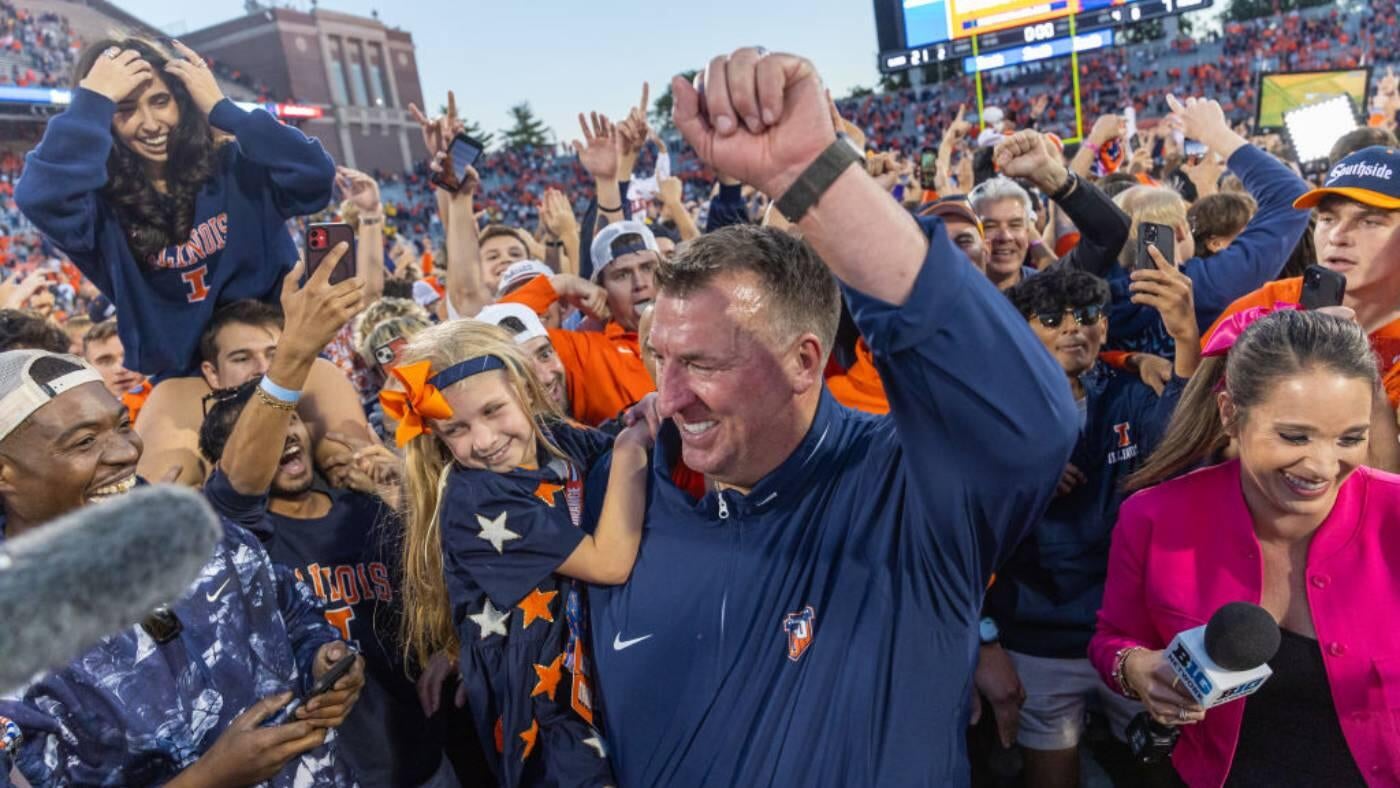

What if I told you the Big 12 could get two teams in this season’s College Football Playoff without the charitable offer of two auto bids from the Big Ten and SEC? I know, it sounds odd given the national view of the conference, but I’m here to tell you it’s more likely than you think.
The Big 12 is a fascinating case study in college football fandom. It’s everything a lot of fans tell you they want from college football. There’s no “big brand bias” in the league because now that Texas and Oklahoma are gone, there are no big brands in the league to be biased toward. It’s also a league of tremendous parity.
If you look at projected win totals for the Big 12 in 2025, no team in the league has a projected win total higher than 8.5 or lower than 5.5. You can’t find anything remotely close to that congestion in a Group of Five league let alone the other Power Four leagues.
The congestion has a downside, though. If you head to your local sportsbook and scroll down the list of national title futures, you’ll see at least 20 schools before you come across a single Big 12 school — and one of them is SMU!
I won’t pretend there aren’t good reasons for this. If you want to win the national title, you need great players, and any look at recent NFL Drafts will tell you that when it comes to talent, the Big 12 lags a bit behind the Big Ten and SEC. However, I’m not here to explain how the Big 12 can win a national title; I’m here to tell you how it could get multiple teams into the College Football Playoff.
How Big 12 can earn more College Football Playoff bids
The first part of it is simple. Quarterback remains the most important position in the sport, and the Big 12 has an argument that it’s the deepest league in the country at the position. There are 16 teams in the league and 10 have a returning starter. That includes the starters at seven of the top nine teams in last year’s Big 12 standings. Among the four teams that finished 7-2 in league play, only Colorado (Shedeur Sanders) lost its starter. Arizona State (Sam Leavitt), BYU (Jake Retzlaff) and Iowa State (Rocco Becht) are all running it back.
Among the schools without returning starters, incoming transfers Devon Dampier (Utah), Kaidon Salter (Liberty) and Conner Weigman (Texas A&M) have 71 games of college experience between them.
As beneficial as having talented and experienced quarterbacks is, their presence alone won’t be enough. The Big 12 will need help elsewhere, but the good news is that help is entirely within the realm of possibility.
Last year, the SEC only got three teams into the field. If both the SEC and Big Ten get four in this season, that leaves four spots and only one at-large spot (the ACC champ, Big 12 champ, and G5 champ take the other three). The Big 12 could still get that at-large, but it would need Notre Dame to have an unexpectedly awful season and for the ACC not to have a strong second team. The ACC section of that hypothetical seems more likely, but there’s another factor worth considering.
How confident are you the Big Ten will get four teams in? Don’t forget Indiana was one of the Big Ten’s four teams last season, and few people saw it coming. Heading into 2025, how many Big Ten teams are you confident about reaching the playoff? Outside of Oregon, Ohio State and Penn State, who are you willing to really get behind? Sure, Michigan could recover, but Illinois and Indiana are seen as the next likely candidates. No offense to those two, but nobody who pays attention to college football would be shocked if Illinois and Indiana fail to reach the playoff.

Also, we’ve discussed the depth and experience at QB in the Big 12, but the Big Ten cannot say the same. Both Oregon and Ohio State are replacing their QBs, as is Michigan (which is almost certainly for the best). Indiana has a new QB, as do eight other Big Ten schools. Illinois, Nebraska, and USC have returning starters and can be considered threats for the spot, but all are far from guarantees. In reality, while the brands are bigger, they’re in similar situations to the Big 12 schools so easily written off by many.
The chances of a gap forming between the top three teams in the Big Ten and its fourth-best team is well within the range of likely outcomes (a quick look at Big Ten title odds confirms this), and if it happens, it increases the Big 12’s odds of getting a second team in.
But, more work remains.
The Big 12 would do itself a tremendous favor by performing well in nonconference games. The league only went 5-8 in 13 regular season games against the ACC, Big Ten and SEC. When it comes to comparing resumes for at-large spots, that simply isn’t good enough. Fair or not, the perception of the Big 12 is the perception and will be until the league changes that, and the only way to do so is on the field.
That means winning high-profile games against the likes of Auburn, Georgia Tech, Iowa, Missouri, Nebraska, North Carolina, Oregon and SMU.
The other part of the equation involves teams separating from the pack. For all the expected parity based on win totals, three Big 12 teams did finish the regular season with 10 wins last year. It wasn’t enough to get a second team in last season, but it could be this season if the Big 12 wins more of those nonconference matchups.
Is the Big 12 getting two teams into the College Football Playoff likely? No, it’s not. But because of the league’s depth at quarterback and question marks elsewhere, particularly in the Big Ten, it’s certainly possible.
And, boy wouldn’t that be a fun thing for the Big 12 and ACC (which got two teams in last year) to bring up to the Big Ten and SEC when they try to push the idea of four auto-bids for their leagues and only two for the Big 12 and ACC?
This news was originally published on this post .








Be the first to leave a comment